Sony Xperia XA1 Ultra review
Phablets and Sony have a long relationship – 'Xperia' and 'Ultra' are two names that have been associated with one another for some time, Sony phones often being among the very biggest phones.
The Sony Xperia XA1 Ultra, released in May 2017, is a prime example. With a 6-inch display it can hardly be considered petite, and unlike some newer releases it does nothing to hide this size behind a trendy aspect ratio or minimal bezels.
This is a handset that is proud of its heritage, borne of a manufacturer which seeks to use the word traditional in its design, that meaning a boxy profile and bezels for miles.
Sony's handset division has long been struggling, trying to find its feet in an enormously competitive field, even with a storied brand name attached. No matter whether it has attached 'X', 'Z', or both to the names of its devices, success has eluded it.
With an unapologetic rectangular shape, a huge footprint and a lot of expectation attached, does the Sony Xperia XA1 Ultra do quite enough to continue the somewhat suspect fortunes of the Xperia name?
Sony Xperia XA1 Ultra price and availability
Since its May 2017 arrival the Sony Xperia XA1 Ultra price has dropped and it can now be picked up SIM free for around $320, £240, AU$440.
In the UK the XA1 Ultra can be picked up from a variety of retailers including Amazon, AO and Argos, and can be had for free on contracts starting at £24 per month.
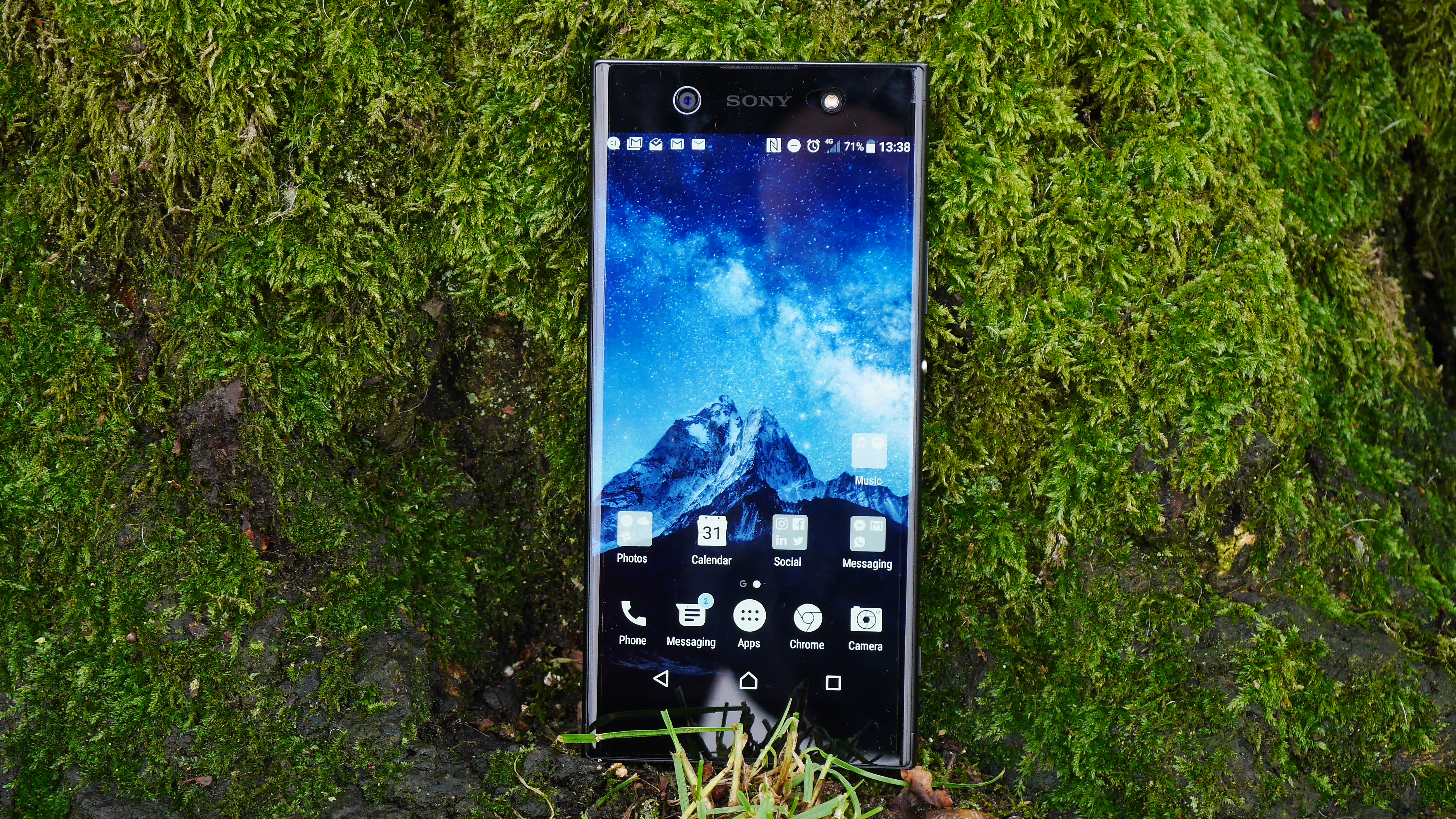
Key features
- Huge screen
- Qnovo battery tech
- 23MP main camera
Does it really need to be said?
What the Sony Xperia XA1 Ultra has over almost all and sundry, is real estate. The screen which takes up almost the entirety of the device, which justifies its entire existence.
And it is a very pleasant 6-inch IPS LCD screen. It has a 1080p resolution, good colors and no drop off in brightness or saturation at odd angles. It isn't AMOLED though, which is a shame for the price point, and pixel junkies will need to look elsewhere for their pixels-per-inch binge, as there is no QHD goodness to be had here.
We generally found that the screen proved to be sharp enough though, with the relatively reduced resolution contributing to improved battery life and performance in gaming.

Another interesting addition is the 23MP rear-snapper. The megapixel wars are long over, yet Sony is still on a quest to cram as many pixels as possible into an ever-shrinking sensor size, and the XA1 Ultra is jam-packed.
A whole host of fancy camera tech has been inherited from the previous generation of 'X' flagships, though only time will tell if that starts to translate into a real performance difference.
A less attention-grabbing gimmick, but an important one nonetheless, is the inclusion of Qnovo smart battery technology.
The idea is simple: batteries age badly over time because charging isn't currently smart. Qnovo technology solves this problem by monitoring the amount of charge going into a phone battery, preserving its long-term health. This is a relatively new tech, so only time will prove its efficacy, however it is a nice value add-on regardless.
Design and display
- Bulky but comfortable
- Big and beautiful display
Since the Samsung Galaxy S8 and the LG G6 burst onto the scene in 2017, phone design has never been the same. Consumers now expect trendy shapes, eschewing sharp corners for rounded edges and seeking the total eradication of anything resembling a bezel.
With this in mind, the Sony Xperia XA1 Ultra is positively retro. The screen is, of course, massive – a 6-inch panel which dominates the front of the device. What makes it stand apart is the use of bezels. Large ones too, both top and bottom, with the sides blessedly remaining free.
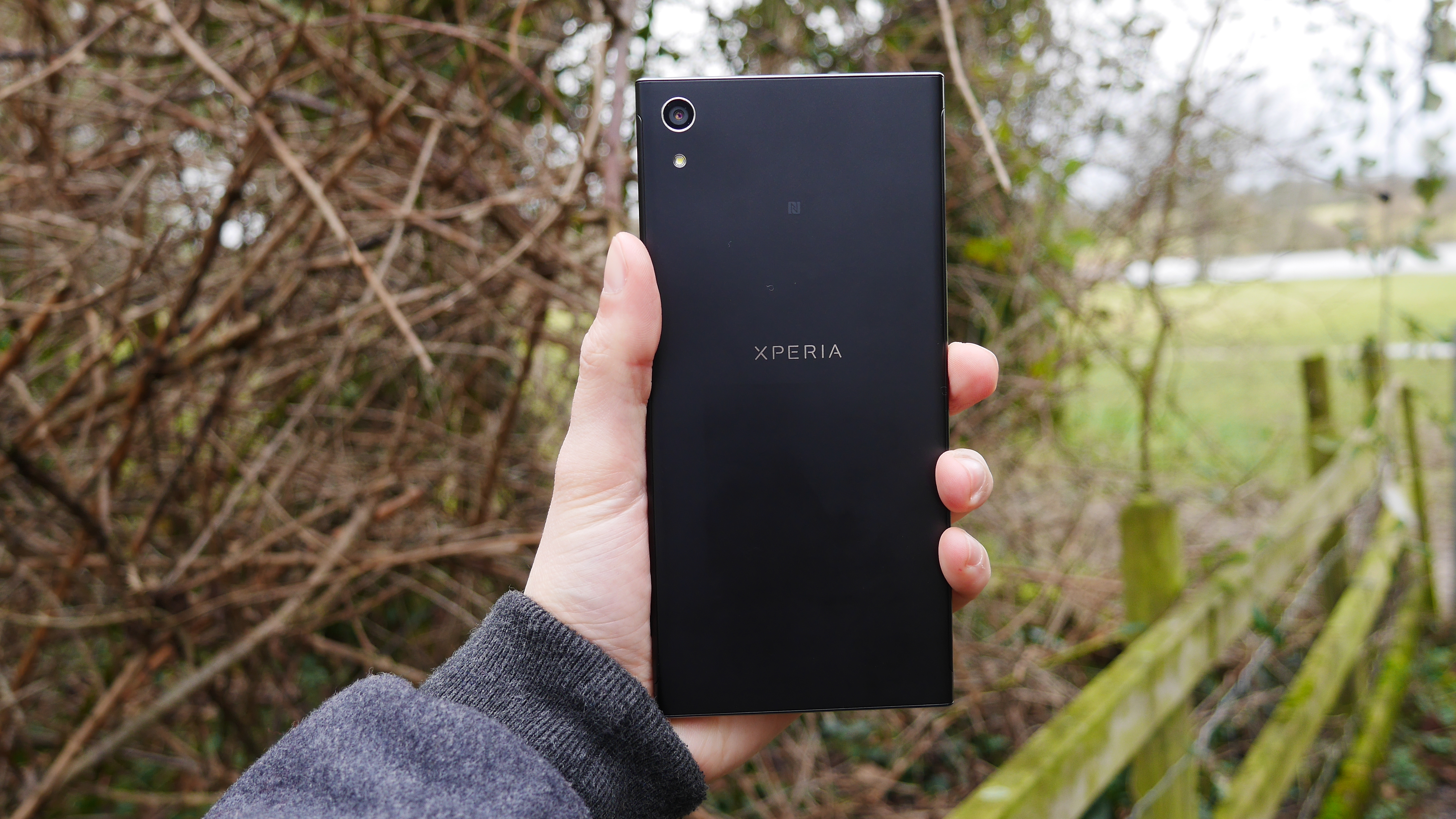
Despite this, and being 165mm tall and 188g, one-handed usage is surprisingly easy, even if it still requires a few feats of acrobatics on occasion. This is a device where certain ergonomics have clearly been considered at every stage of its design, maintaining an even balance in the hand.
The rear of the handset is coated in aluminum, which feels very cool to the touch and suitably premium. Everything has a reassuring heft, and the device feels as though it could take a knock or two and keep on going.
The 'loop' design that Sony is taking great pains to promote is also obvious from the top and the bottom, lending this phone something special in a sea of cookie-cutter 'try hard' designs.
With the front being dominated by the display, it also makes room for a call speaker, a front-facing flash, a selfie camera and more (the bezels leave a great deal of room).
On the right can be found the power button (which doesn't double as a fingerprint scanner), the volume rocker and hallelujah a two-stage shutter button.
The top houses a 3.5mm headphone jack, the bottom a speaker and a USB-C port, and the left is completely flush.
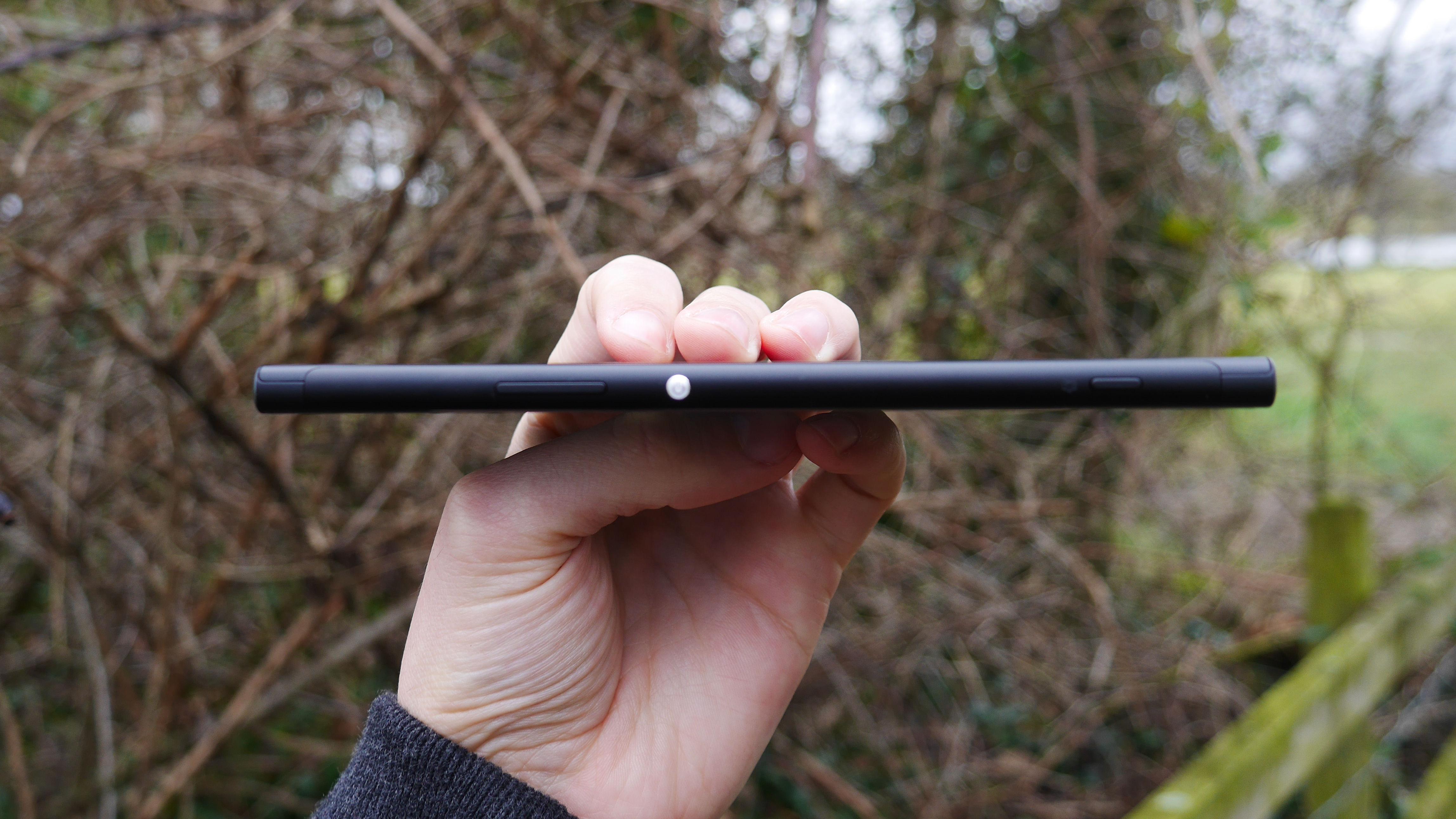
In all, should this have been released in 2015, it would have turned heads, but in the era of the Honor 7X the LG Q6 and more, it feels decidedly retro. For a certain type of buyer, it represents a unique shape that they will snap up regardless, as Sony fans have done for some time now.
The display itself is a cracker. For an IPS panel it has excellent contrast and pretty good sunlight legibility, aided in no small part by strong maximum brightness. Backlighting is even, and there is no color shift, although as is typical for IPS it has a somewhat cool color cast.
As is the case with Sony phones, this color contrast can be altered with the display calibration tool built into the settings menu. For almost anyone, this screen is good enough however, and is certainly a joy to watch films and play games on.
It must be said that while the feel of the device is nice, the attention which went into trimming the side bezels could also have been extended into the top and bottom.
At the moment, in the hand this is a step away from holding a cinder block, here's hoping the next iteration will lose a few pounds and a little height in the process.
Battery life
- All-day battery
- Smart power management tech for long cell life
With a huge screen and so much bezel on display, one might have expected that the Sony Xperia XA1 Ultra would come packing a whopper of a battery pack - of course this was not the case.
Instead, Sony crammed a 2,700mAh power cell into the frame, a smaller capacity than is typically fitted on phones around 20% slimmer, and lighter.
So does the XA1 Ultra have terrible battery life? Thankfully not. Aided by software optimizations and a power-efficient chipset, this is a phone that will get you from the start of the day until the end with a little juice to spare.
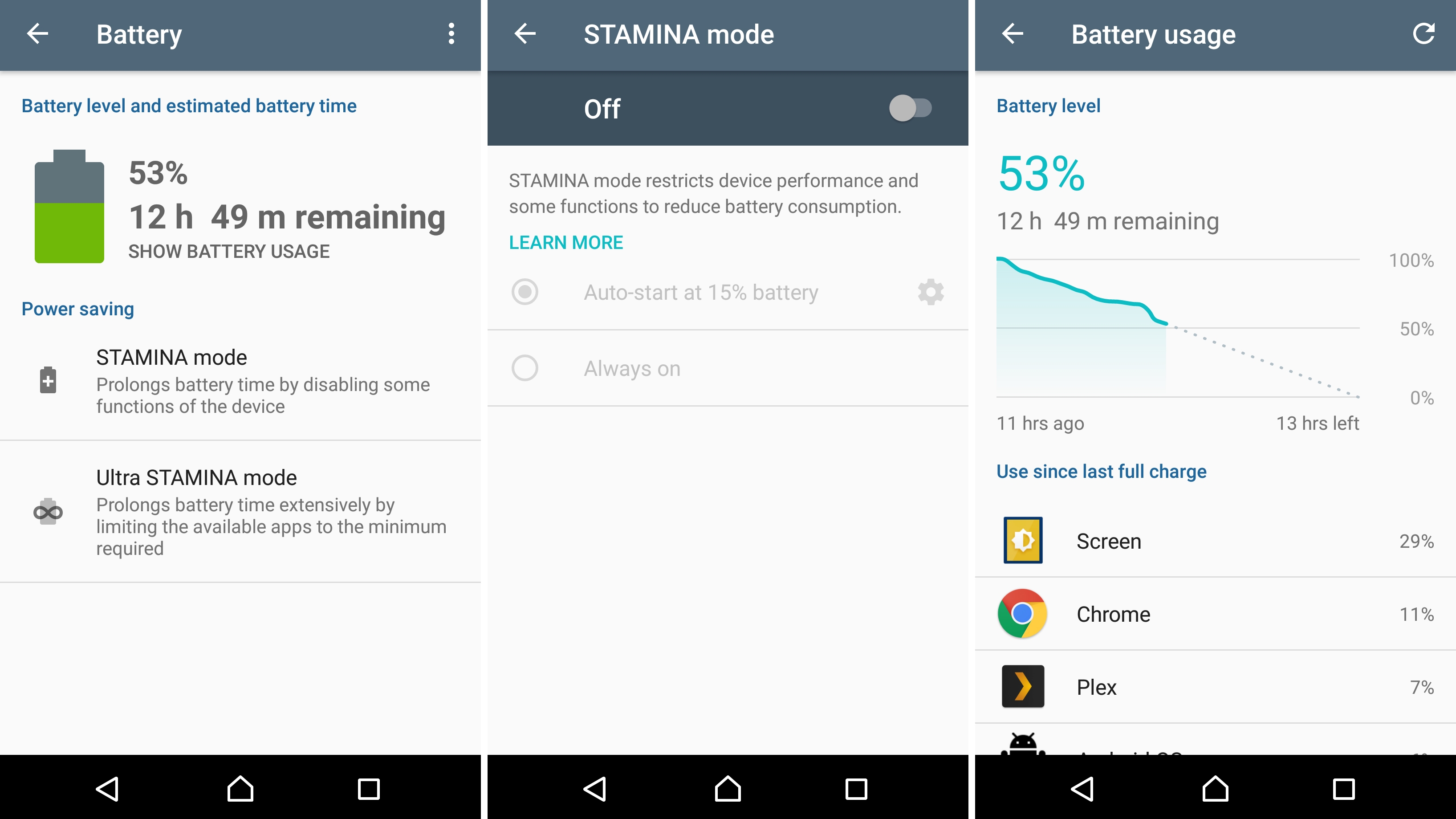
Waking up at 6:30am, with a 50-minute commute, listening to music and answering emails throughout the day, with some video watching in the evening, we typically found that we had around 28% left by 11pm, a solid showing overall. With lighter usage this will extend to two days for many.
Running our battery test (a 90-minute video at native resolution with the screen at full brightness) we found that the Sony Xperia XA1 Ultra lost 21% of its battery life, which is short of, say, the 12% lost by the OnePlus 5T, but comparable to the 22% loss of the Honor 7X.
We found that web browsing in particular was a strong suit of this device, if you are someone who uses their smartphone regularly for reading this may prove to be of some interest.
Camera
- Strong color and detailed images
- Cluttered main app
It is a common refrain: Sony manufactures cameras, but yet its smartphone snappers are sub-par. Does this apply to the Xperia XA1 Ultra? Only to a degree, and it is mostly subjective.
The camera app itself is relatively straightforward. By default, users are placed in 'Superior Auto' mode, which judges things like ISO, shutter speed and activates HDR mode as and when required. By default, the camera makes use of the 23MP available, producing very large files.
Swiping up activates movie capture, swiping down activates the somewhat limited manual mode. Both are a little easy to activate unintentionally, but this is offset by the presence of an actual camera button.
A button which opens the camera from sleep and can capture images - a feat of design straight from 2013, but one which is thoroughly appreciated.
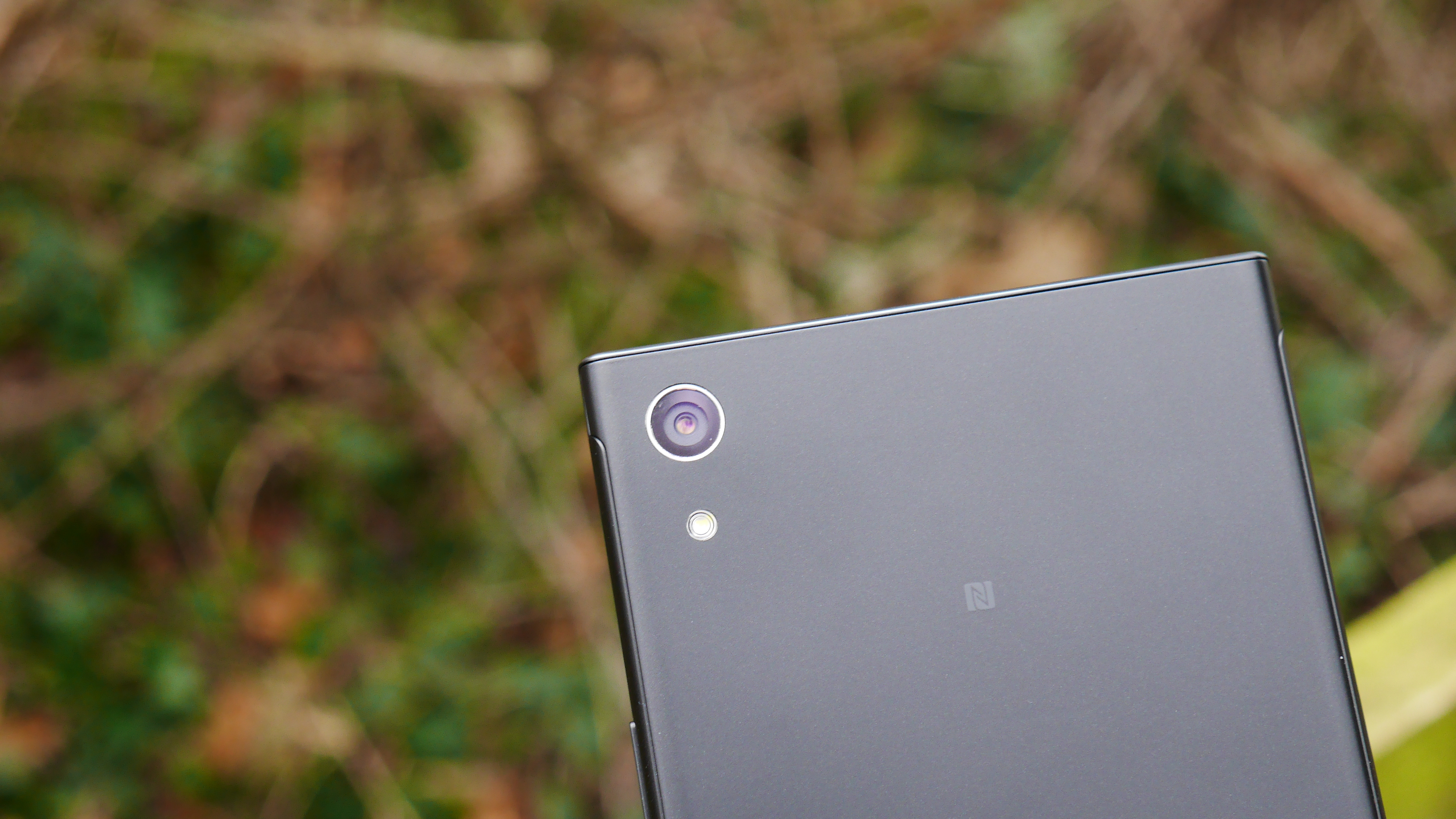
The app is certainly quick to launch, and photos are captured quickly, essential facets of the smartphone image taking experience.
Certain features of the app are a little questionable. The panorama mode is a separate app in and of itself, while the inclusion of an AR mode is a bit gimmicky. Certain things like HDR mode are hidden in settings menus, something not exactly ideal for those who like to tinker.
That said, the images taken are, on the whole, pretty good. Color is well represented, with greens in particular appearing nicely saturated without looking 'nuclear'.
Detail too is very apparent, as you might expect with such a high-resolution sensor. It is when viewing images at 100% magnification that the situation changes somewhat.
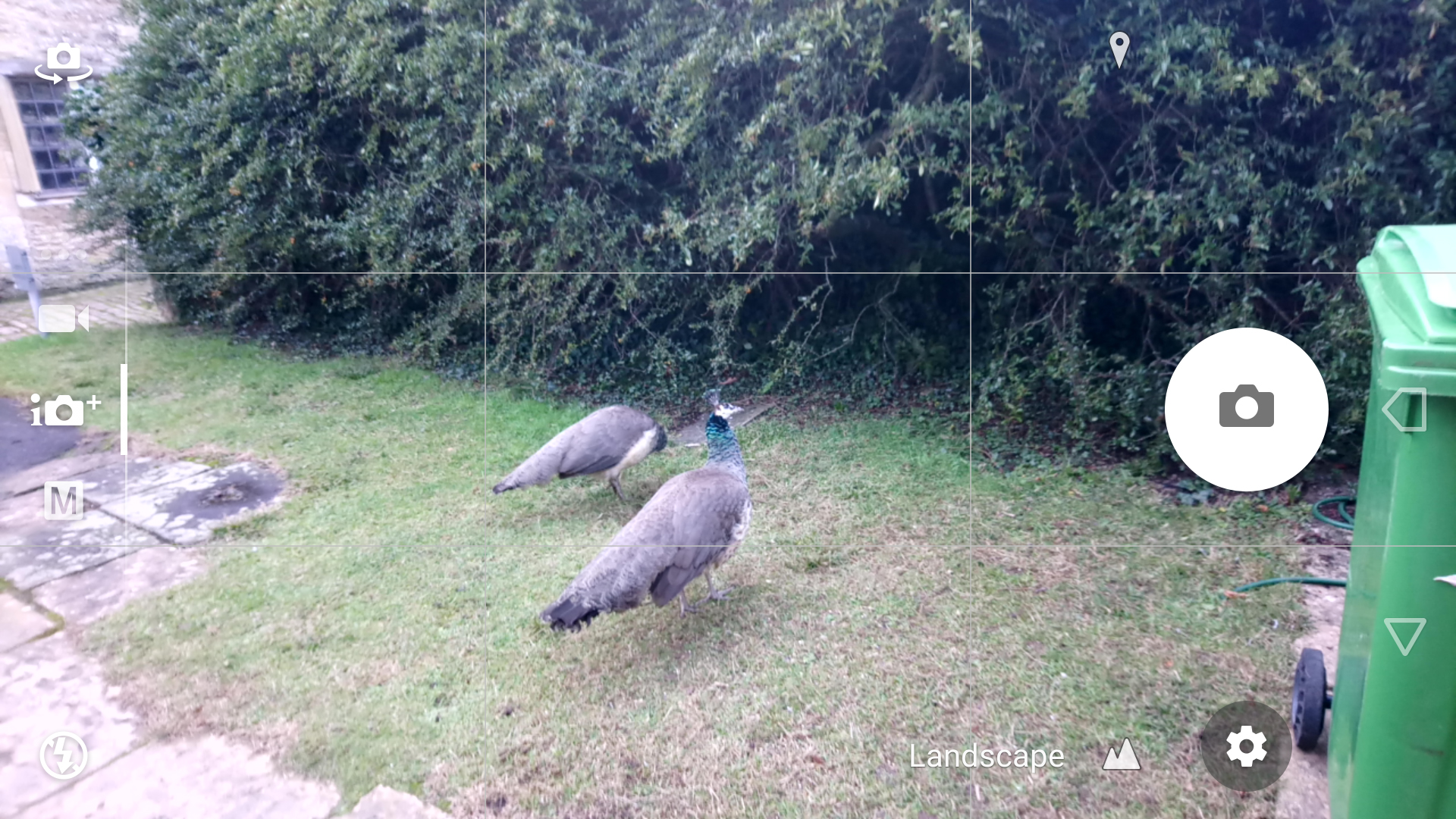
How different manufacturers handle noise reduction is largely a matter of taste, and Sony has clearly chosen to keep the digital noise in the hope of also preserving detail, especially at lower shutter speeds.
This can occasionally make for muddy images which might not appeal to all, especially in low light. One factor in its favor other than detail (and excellent contrast) is the dedicated viewing modes.
When viewing images, the screen knows to alter colors accordingly (to suit preferences, and this can be toggled on and off) to make viewing images a more pleasurable experience.
The 16MP selfie camera captures detailed images with good enough dynamic range, while video capture is certainly nothing to write home about.
In all, those looking for top class stills won't find them here, however this is a photographic tool good enough for the majority of people who depend on their smartphone for photos.
Camera samples
Interface and reliability
- Lightly skinned Android
- Stutter-free performance
As it has done for some years now, Sony has mostly given up the pretense of running a full Android 'skin', instead opting for enhancements to the core experience of using Android - specifically Android Nougat.
That is to say that the interface is mostly the same as that of any other device using Google's chief operating system, with a few tweaks here and there.
There's a powerful theming engine included, which offers an easy means by which to change the appearance of the phone, right down to the navigation keys, all for free (or a small cost). Included too on the start screen is a helpful guide to setting up the phone, a gallery app and a music app.
The latter two are particularly welcome as feature-filled alternatives to Google Photos and Google Play Music.
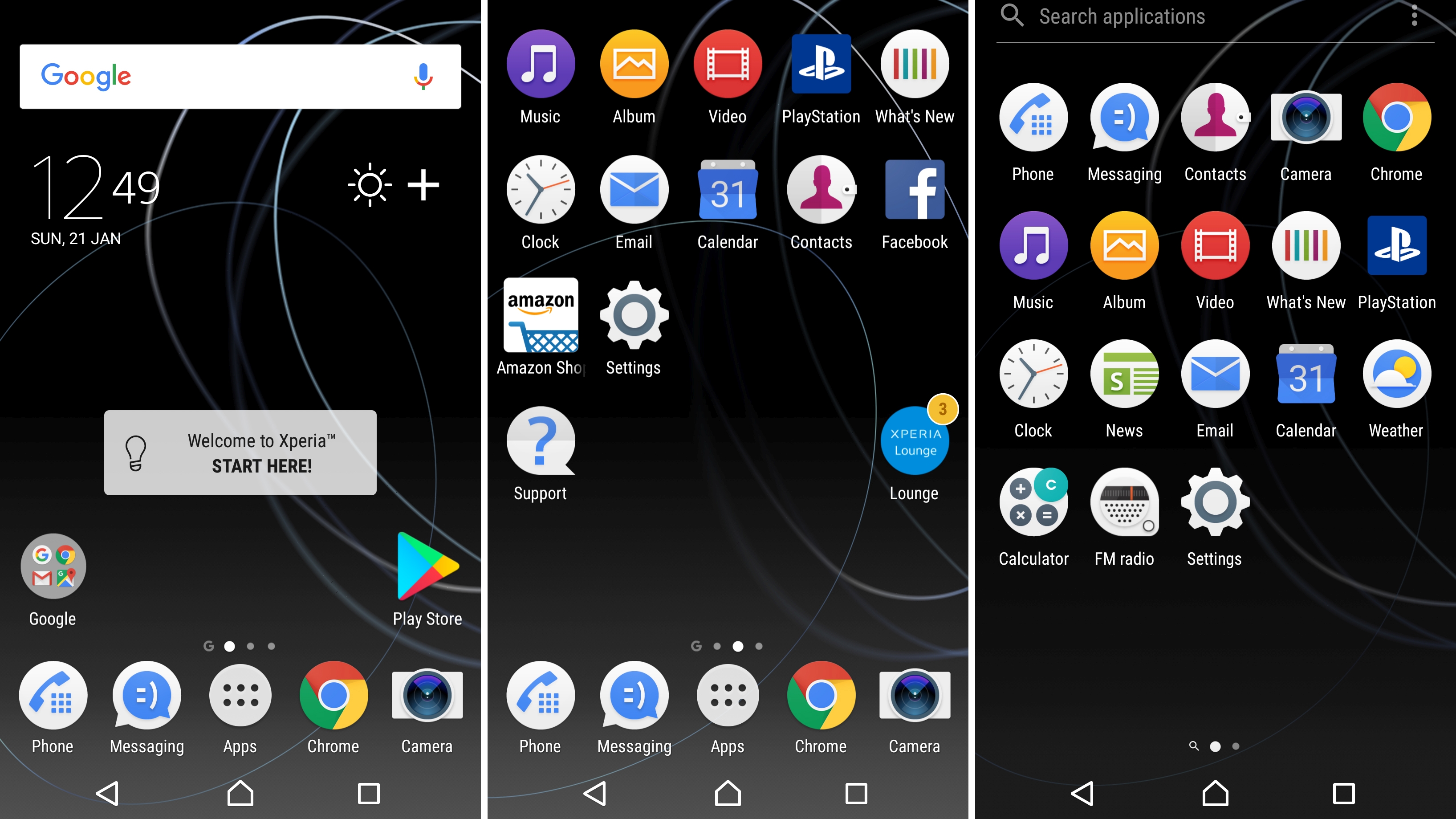
Albums shows existing photos taken on the phone, but also pulls in images from other services including Flickr and Google Drive, presenting a comprehensive view of images taken.
Music offers a view of locally stored music, but also allows access to several proprietary Sony audio algorithms, improving the fidelity of wired headphone audio considerably, a nice boost for those who can take advantage.
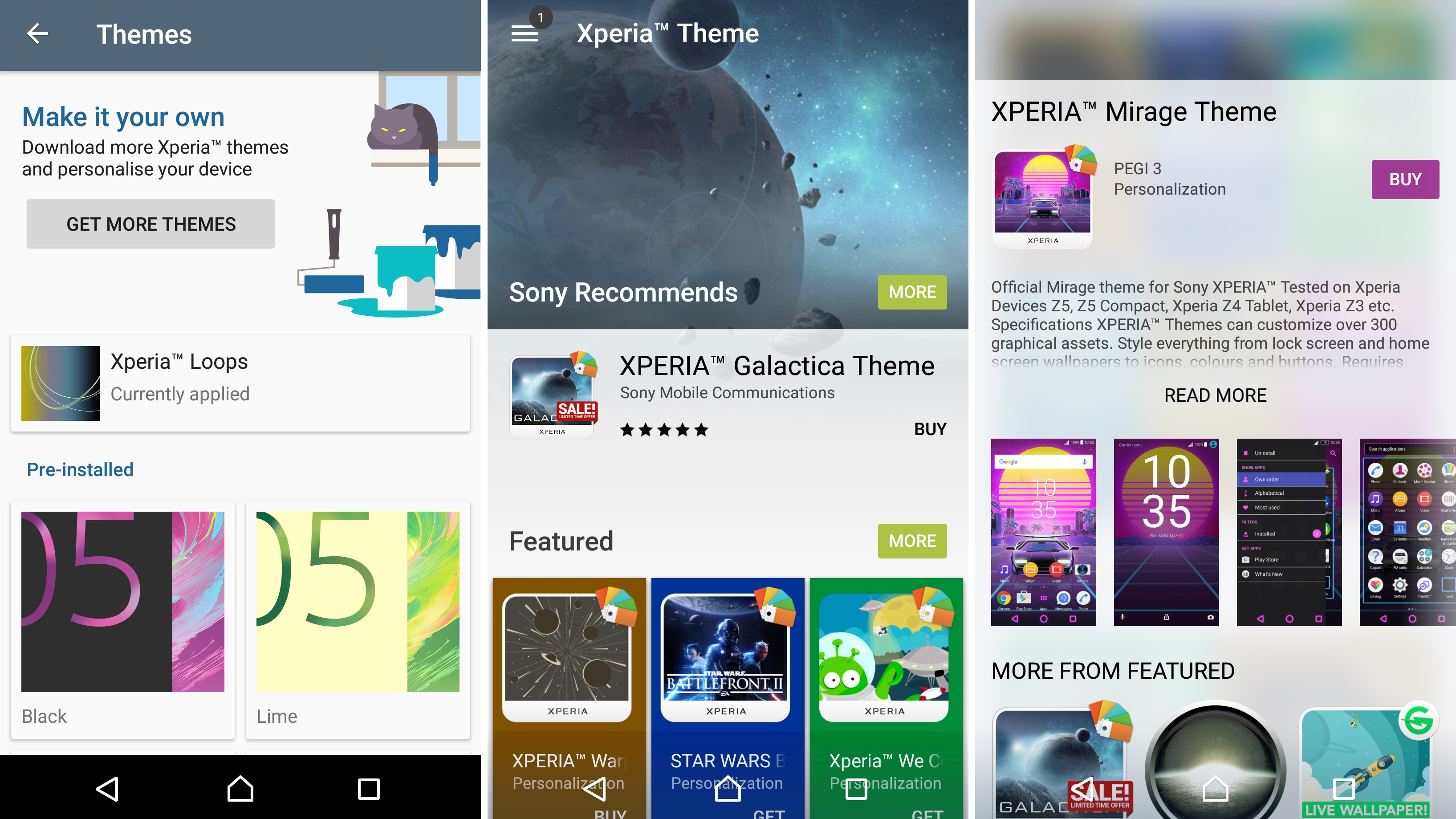
Less welcome are additions such as Xperia Longue, which is merely a Sony store filled with 'deals'. The PlayStation app is also a little redundant for those who do not own one – of course though your mileage will vary.
Generally, we found that the MediaTek chipset and generous 4GB of RAM kept everything powering along at a reasonable click.
Navigating through the interface never proved an issue, although the chipset did present a few compatibility issues with several apps, refusing to play nicely with the likes of Microsoft Launcher. This may change with time but at the moment proves to be something of a bugbear.
On more intensive apps, dropped frames could be seen here and there, but this is a phone that most will have zero issue with on an everyday basis.
Movies, music and gaming
- Solo speaker lacks bass
- An immersive display and decent gaming performance
With a huge screen, the Xperia XA1 Ultra was made with movie watching in mind, and luckily it mostly does not disappoint. With such an immersive display, it is easy to lose oneself in a good Netflix binge, and yet there is a caveat: the speaker.
With such large bezels, and given the price point, it might not have been too much to expect a pair of dual front-firing speakers on the Xperia XA1 Ultra, and yet all we receive is one solo downward-facing effort.
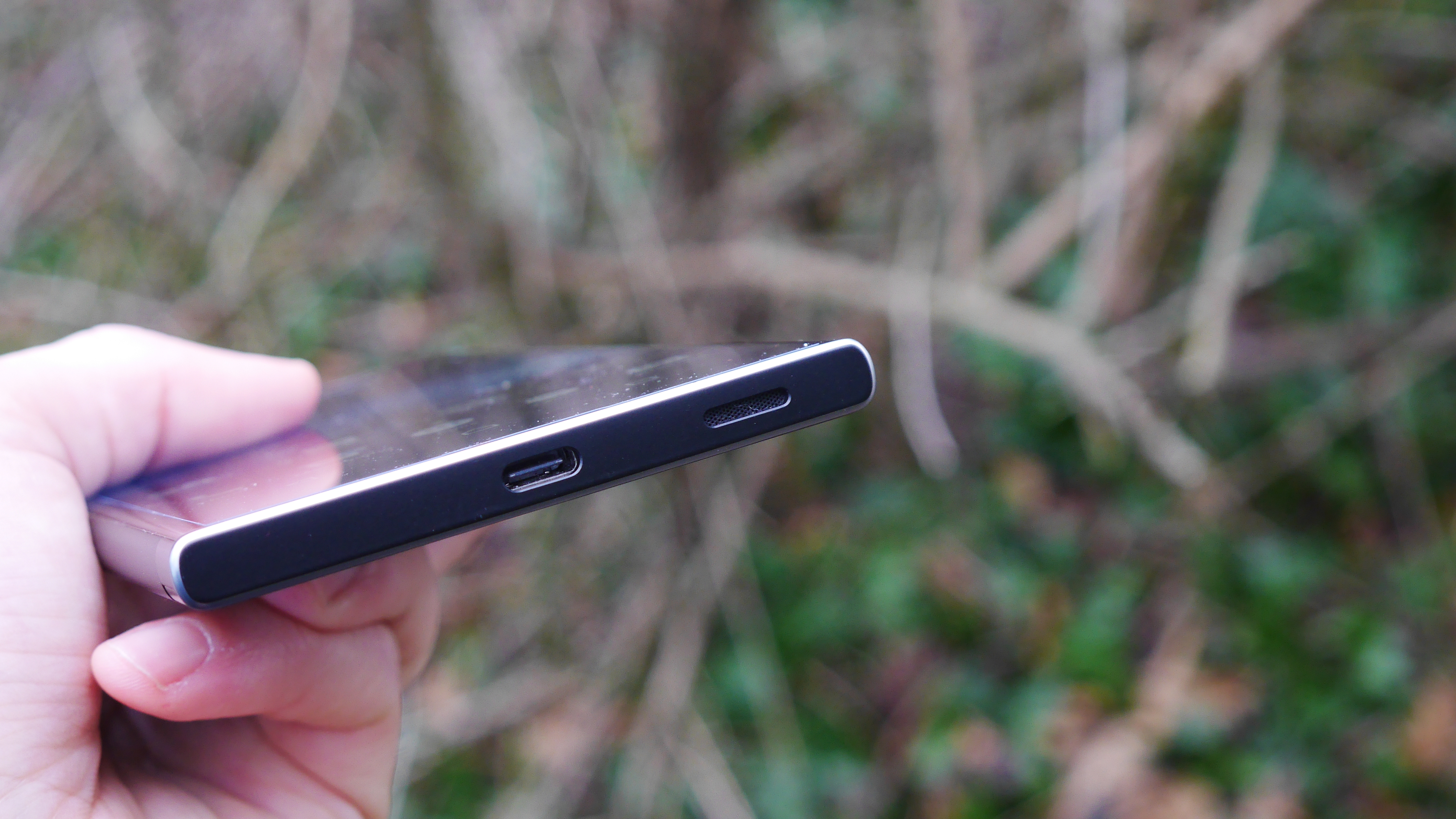
That isn't to say that it is objectively bad, this is far from the case, although it does ruin the experience a little. Overall, we found that the speaker had adequate volume, with only a little distortion at higher levels. Of course, there is no bass, though this is to be expected from a smartphone speaker not made by HTC.
Headphone performance on the other hand is really rather good. Sony’s experience in this area shines through, with the Ultra delivering crisp highs and well-defined bass, powering a pair of decent headphones with no real issue.
This is audio aimed at pleasing consumers – and thus is great news for the consumer.
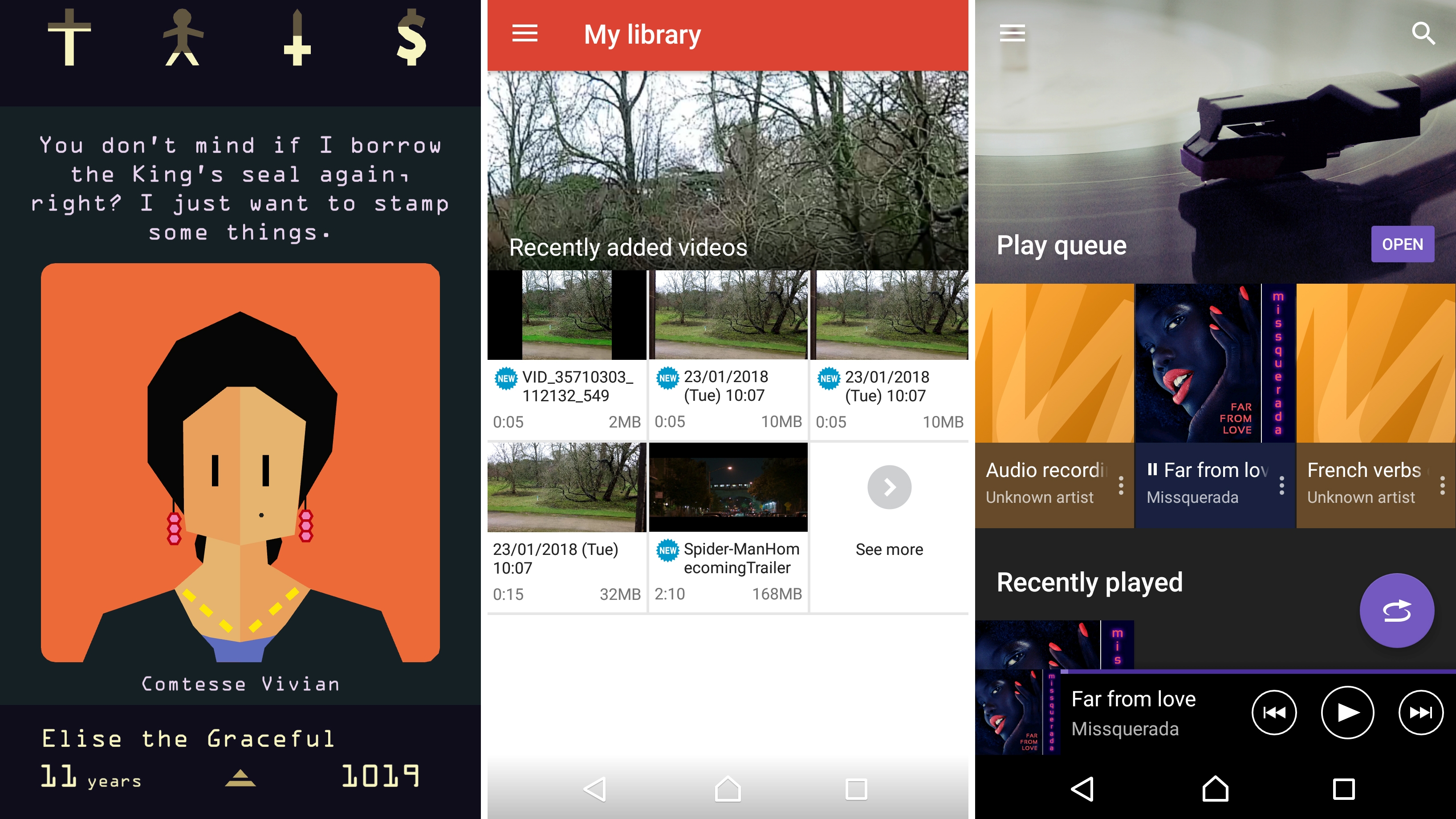
Gaming performance too is pretty good. Though the likes of Asphalt 8 will drop frames if you push the settings to max, for 90% of the titles that people play from the app store this is really quite enough.
Performance and benchmarks
- Doesn't run hot
- Handles most tasks well
MediaTek, though it has been kicking around for quite a few years at this point, has never quite shaken its reputation as being the sickly lesser cousin of the glorious Qualcomm. This hasn’t stopped it producing the odd gem of a chipset here and there of course.
The Helio P20 powering the XA1 Ultra is roughly equivalent to the Snapdragon 625 in both power and power efficiency, which is no bad thing given the reputation of the latter for both.
In everyday use we found that the chipset handled itself with aplomb, this performance extending to more difficult tasks too, with almost no heat production to boot.
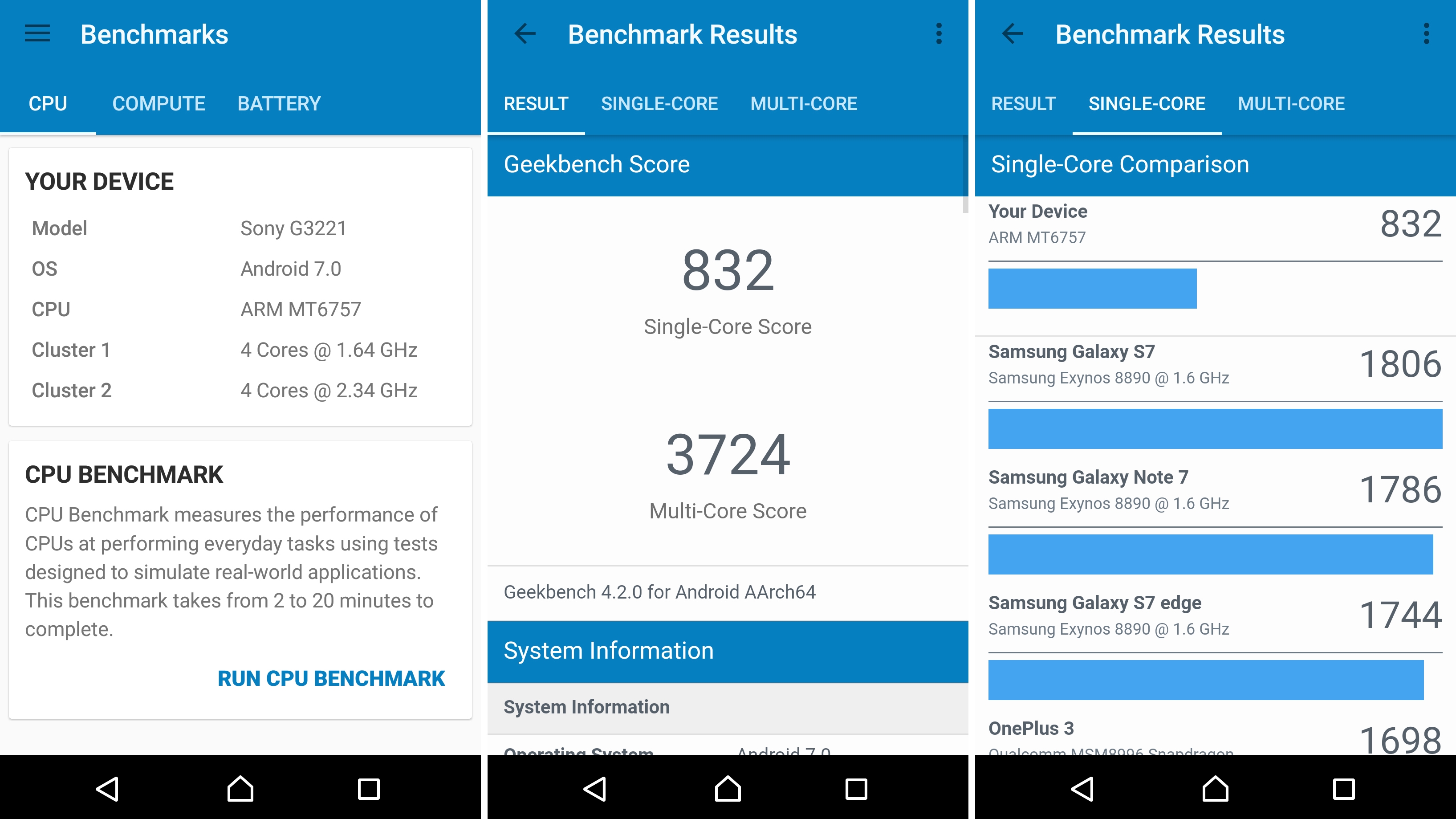
Looking at benchmarks, we can see that with a single core score of 832 and a multi core score of 3,724 in Geekbench, the XA1 Ultra certainly isn't set to win any competitions. It must always be said though, benchmarks are for comparisons, not every day use.
If you are among the most demanding of power users and know it, the Oneplus 5T will be a better fit, for almost anyone else however this is absolutely enough for their needs.
Verdict
The Sony Xperia XA1 Ultra has a lot going for it. The screen is bold, bright and power-efficient and the chipset keeps everything chugging along nicely, with nary a performance glitch in sight.
And though it doesn't push the boat out in terms of design, it is certainly well put together, feeling worth every penny and then some.
The battery life too is a treat, despite the size of the power pack included. The Sony Xperia XA1 Ultra is good for a day to a day and a half of moderate use, and the standby time is excellent, losing only a couple of percentage points when unplugged during the evening.
Not everything is great however. Though the camera is solid, in certain situations, like in poorly-lit areas, it has a tendency to turn images into a soupy mess. The speaker too is slightly lacking in both volume and bass, which hurts media credentials somewhat.
There are also the bezels, which will be majorly off-putting to some, for they help this reach the echelons of the biggest of big phones.
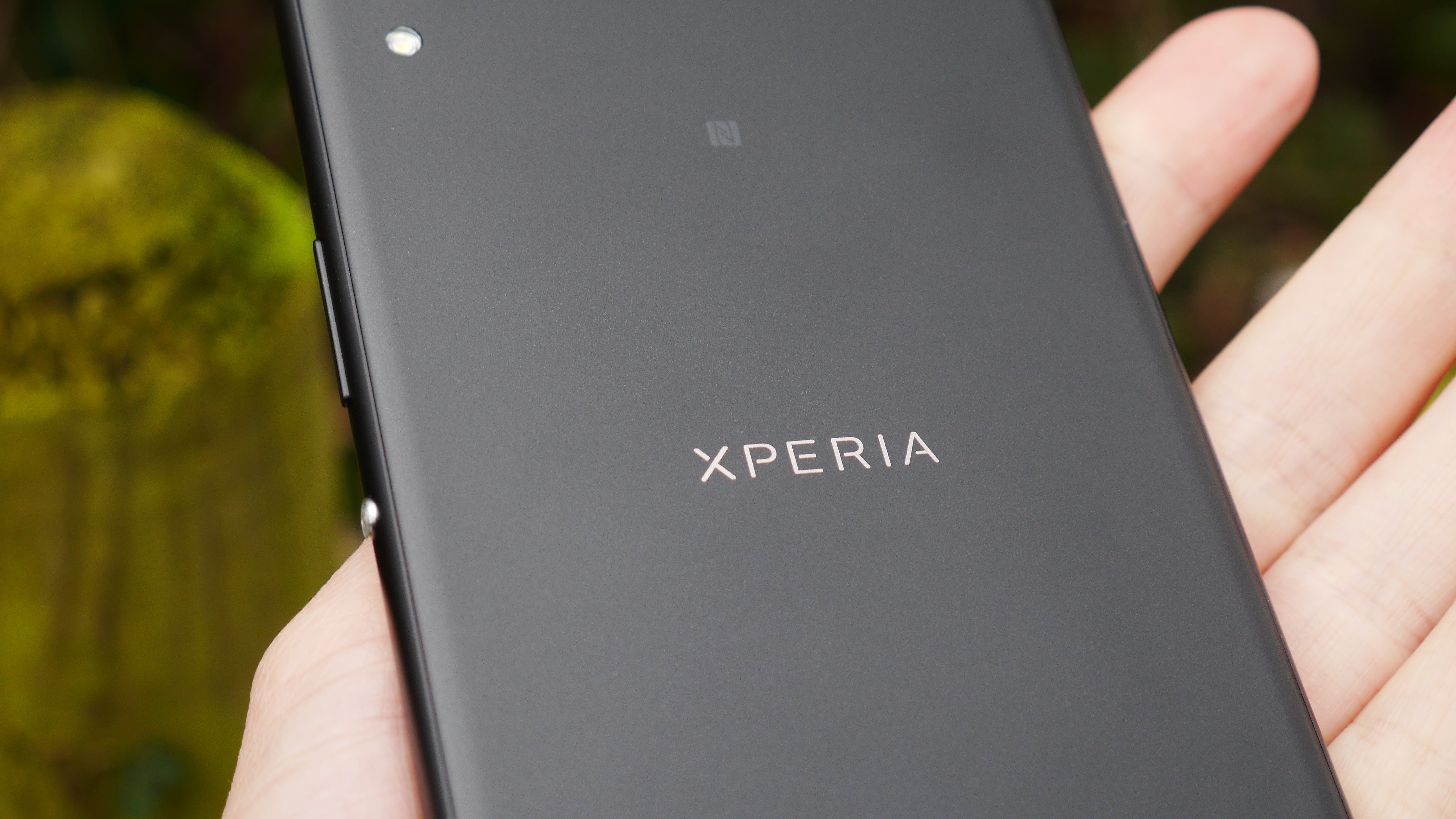
Who's this for?
The Sony Xperia XA1 Ultra is a device that is simple in design, concept and execution – it is a big smartphone for people who want a big smartphone. This an unapologetic, large device and will not fit in the lives of those with smaller hands.
Should you buy it?
If you are after a big phone, there are few better options at the price point now that it has taken a tumble, with the Xperia XA1 Ultra currently retailing for around $320/£250/AU$440. The screen is lovely, the battery life is reliable and the camera is capable of capturing solid images.
It's not perfect, but the phone is big, boxy, bold and - for a certain buyer - all the better for it.
Since its release the Xperia XA1 Ultra has picked up some strong competition, such as the following handsets.
OnePlus 5T
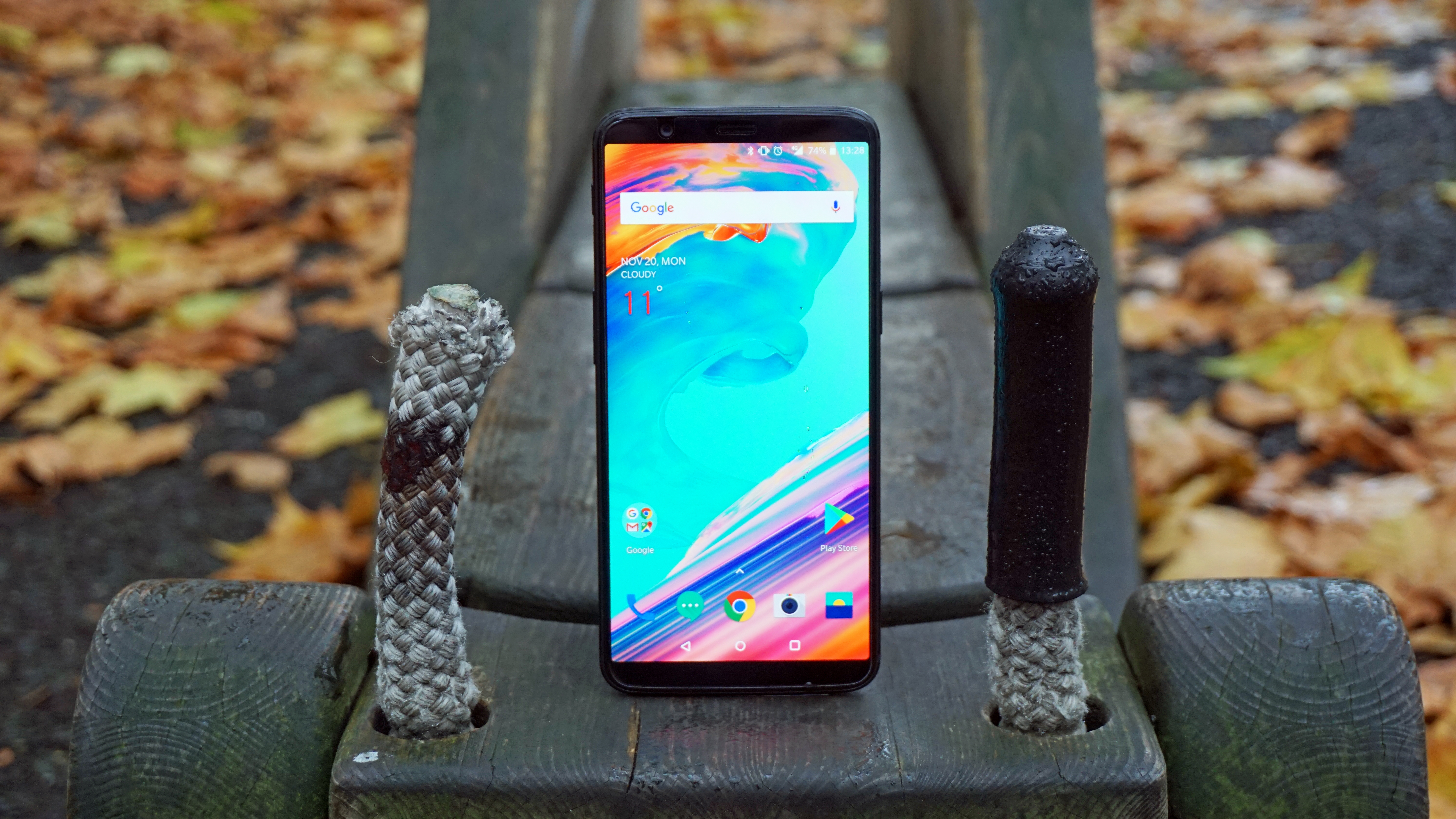
Although a chunk more than the Xperia XA1 Ultra, the OnePlus 5T is still decent value and offers a similarly sized screen, with a trendier aspect ratio and a truckload of extra power.
OnePlus has a habit of releasing a new phone every six months, and so it is yet to be seen what long-term software support will be like – but for those who are willing to spend a little more, this is a lot more phone on offer than the Sony.
- Read our full OnePlus 5T review
Xiaomi Mi A1
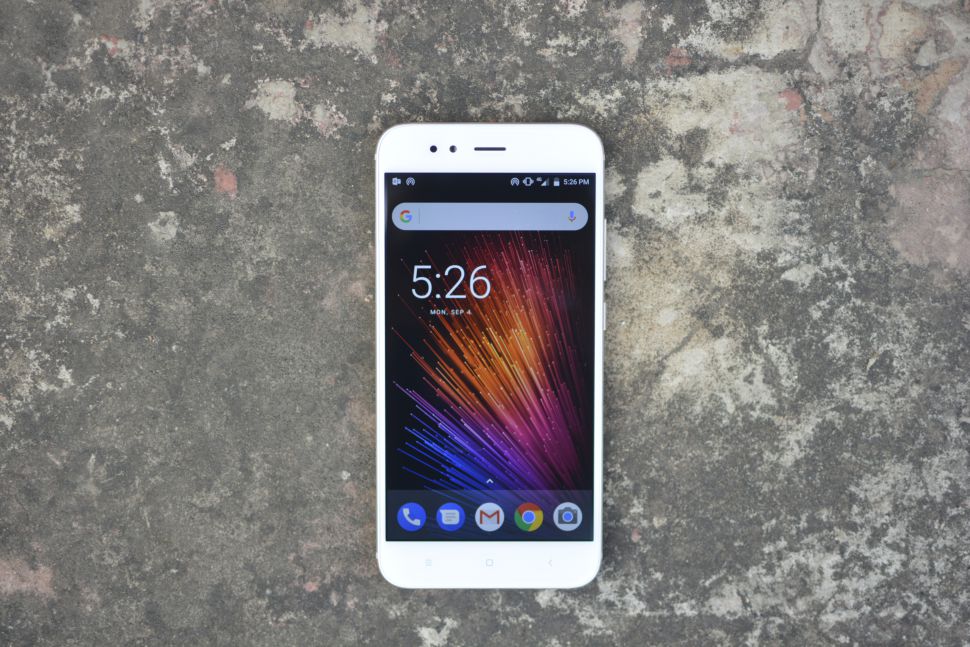
Xiaomi is a name unfamiliar to many in the west, but its first Android One device, the Mi A1, may well put it on the map. Retailing for around £200/$250/AU$300, it offers a 5.5-inch 1080p screen, a Snapdragon 625 chipset and a nifty dual camera arrangement on its rear.
As is always the case when buying what is technically a grey-import, don't expect any long-term technical support if issues arise. Those looking for a little extra security would be best with the Xperia XA1 Ultra.
- Read our full Xiaomi Mi A1 review
Honor 7X
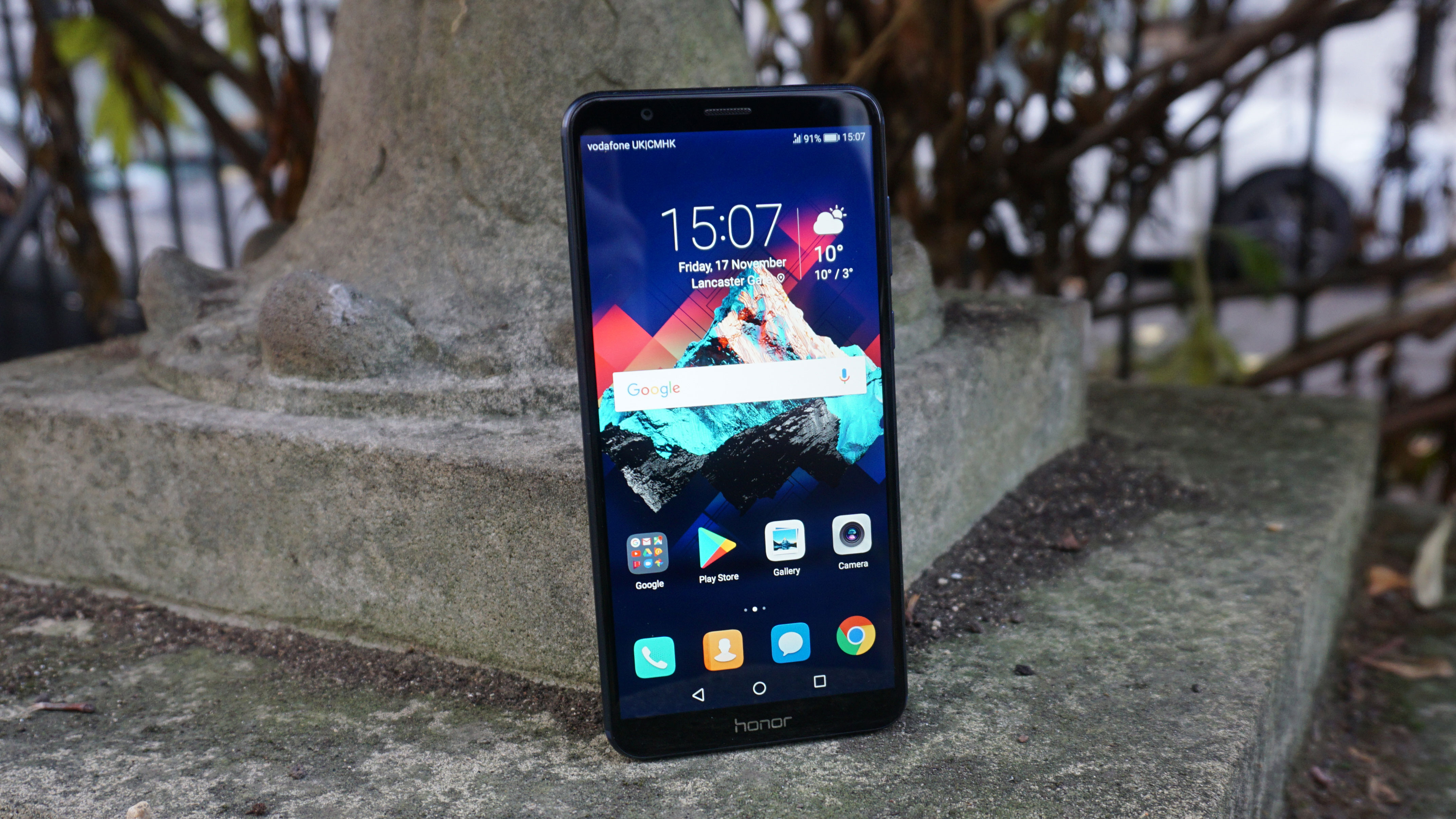
This new addition to Honor's impressive roster features a similarly sized screen to the Sony, an 18:9 aspect ratio, a large battery and a very similar price point. It also offers a posh dual-camera arrangement and a snazzy metal coat.
But the Honor 7X runs the divisive EMUI skin over stock Android, which may dissuade some. This is a very strong competitor which outdoes the Sony in both looks and 'newness', although it does lack NFC.
- Read our full Honor 7X review
First reviewed: January 2018
0 comments:
Post a Comment